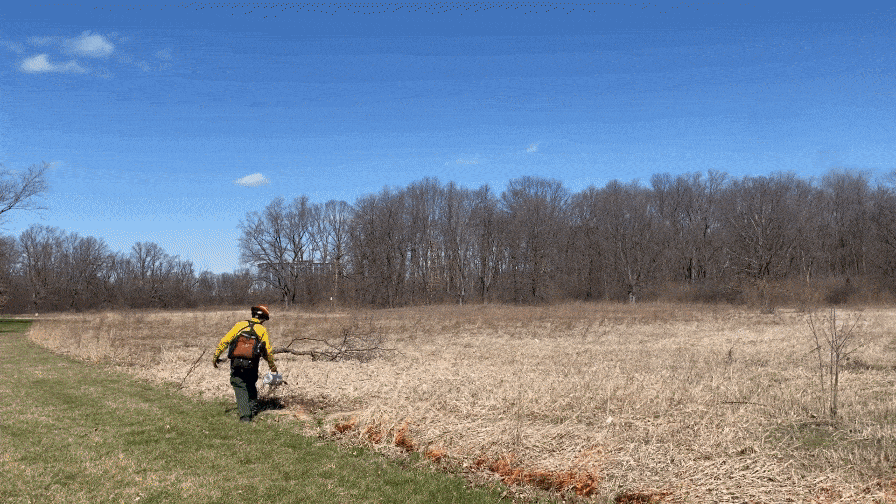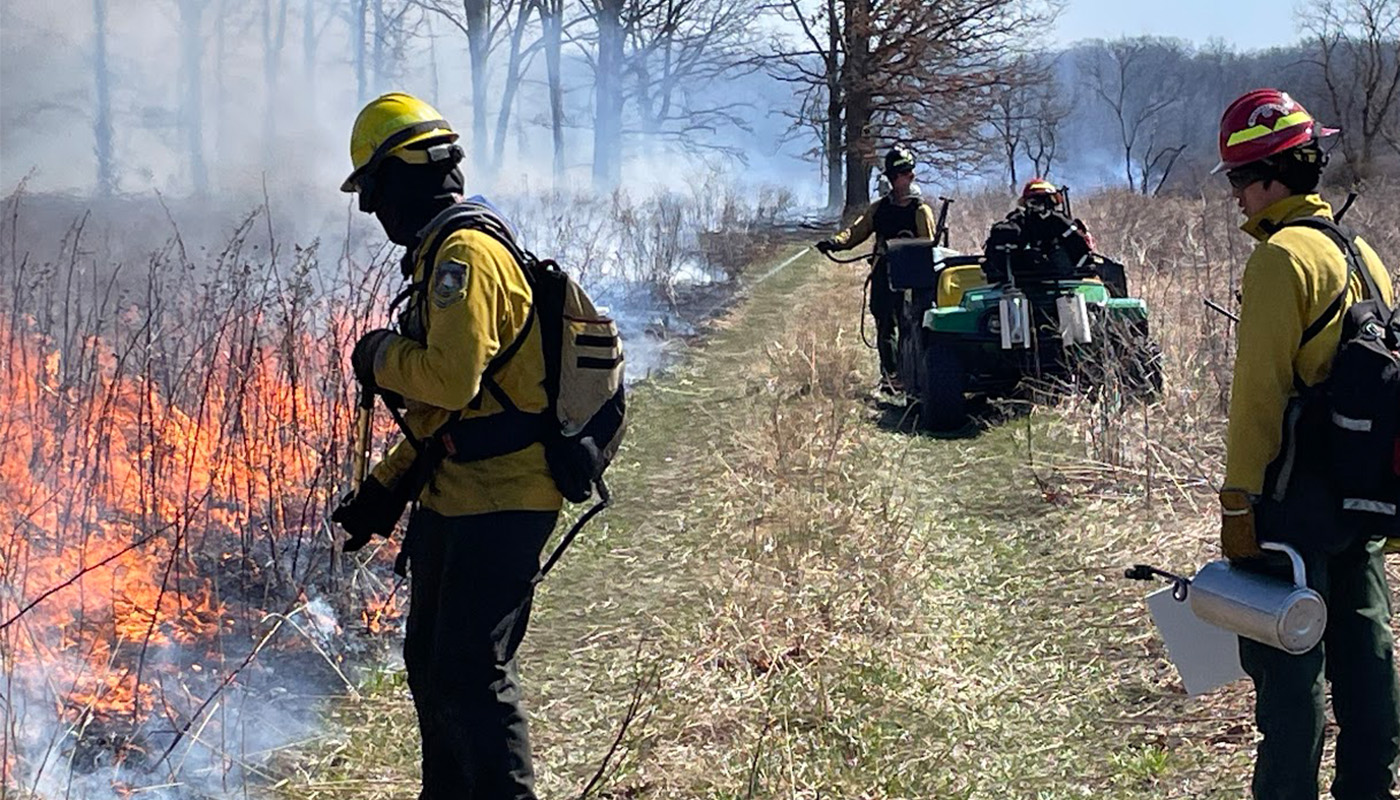Prescribed Burns Part of Forest Preserves’ Experiential Education
The wind whips across the prairie on a bright, cool early spring day, although the heat from the spreading fire no doubt keeps the participants toasty; that is, if their face masks and other protective gear are not already doing the trick.
This group of 10 students from University of Wisconsin-Stevens Point, all majoring in forestry and related fields, has assembled in Busse Woods in Rolling Meadows to undertake a prescribed burn of underbrush—some native and some not—to boost the growth of the prairie and nearby oak woodland. It’s all part of an “alternative spring break” experiential education program by the Forest Preserves Department of Resource Management.

“The fire is going to be working its way through the oak woodland. That stimulates the trees and ground vegetation. You’ll see new growth when everything burns off,” says Kirk Swanson, resource technician for the Forest Preserves, who is supervising the activity.
Stevens Point students have joined the resource crews in the program for about a decade, and this year, for the first time, the Forest Preserves also hosted a couple students from Grand Valley State University in Michigan. Other sections within the Preserves have their university partnerships as well, helping to educate and prepare up-and-coming natural resources professionals.
The students in the prescribed burns program are majoring in ecosystem restoration and management, wildlife ecology management, conservation law enforcement, forestry and natural resources. All are required to have basic wildland firefighter training, and its usually students in those majors who have the necessary certifications.
Nick Peotter, a junior studying forestry at Stevens Point, says he’s participated in several burn activities near the University of Wisconsin campus, as well as in Florida over winter break. “This is likely going to be part of my career, once I’m out of college,” he says. “We have classes on this too—this is what we’re learning.”
Palatine native Bill Sloan is studying conservation law enforcement and hopes to become a park ranger or game warden. He’s taken classes on topics like fire ecology and has a certification for wildland fire science, although the fire crew itself is more of a hobby for him. “It’s just something I do for fun. I like it a lot,” he says.
Elliot Medina, the assistant resource operations manager with the Forest Preserves, explains that prescribed burns are a land management tool to bring about ecosystem health. “That’s anything from hoping to control invasive species to thatch reduction,” he says. “Sometimes we’ll burn a site if it needs seeding. We get a good, clean slate, ensuring seed gets needed ground contact.”
The students have learned to adjust to conditions and participate in activities as much as possible on a given day. “If the weather’s good, we go out and do as many burns as we can. If the weather wasn’t good, we’d probably be doing some service projects around here,” Peotter says. “We did some brush and litter cleanup yesterday at Palos Preserves.”
“The burn yesterday got called off because it was too gusty,” Sloan adds. “You’ve got to keep the fire within your realm of control.”

